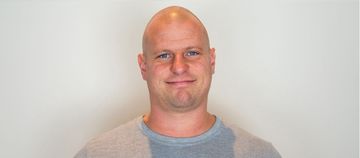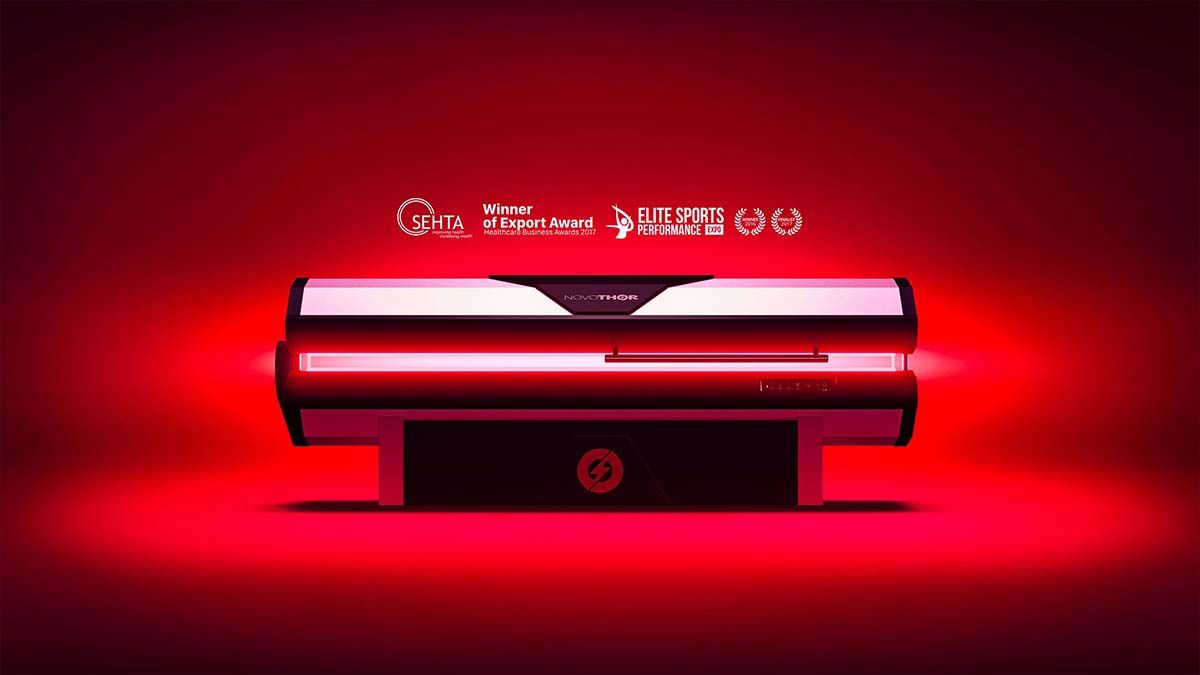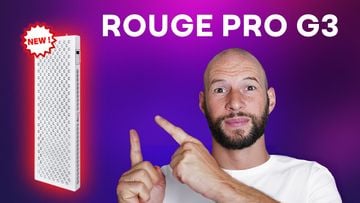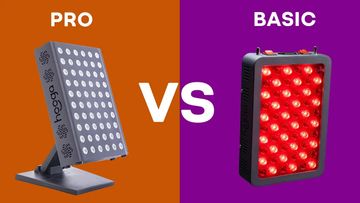In this blog post, I'll break down all ten available studies on the THOR Photomedicine products. THOR is a company initially setup by James Caroll, which offers both laser products for many different applications but also a premium red light therapy bed called the "NovoTHOR".
The lasers products, called Thor Lasers, can be used for many different purposes, such as oral care, (chronic) pain, helping you deal with cancer side-effects such as oral mucositis and even veterinary applications.
Many people don't know that different THOR products, such as the lasers and NovoTHOR, have been used in scientific studies. The Excel sheet I'm using created by Vladimir Heiskanen contains more than 7,000 studies on light therapy, primarily red light therapy. I'm using all ten studies on the THOR products contained in that Excel sheet to illustrate that these products work.
Keep in mind that THOR products aren't cheap. For instance, the price range of the THOR lasers ranges from $16K to $40K USD (with VAT possibly being added). Different clinicians are the main target audience of THOR, not individual consumers. Instead, the goal of THOR is to provide you with the best of the best photobiomodulation options - commonly called "red light therapy" - within a medical audience.
Summary: THOR Laser And NovoTHOR Effects In Scientific Studies
- Although very expensive as a consumer product, THOR products, such as their lasers and LED products (i.e. the NovoTHOR red light therapy bed that contains 2,000 LEDs) have an excellent track record in scientific studies.
- Benefits in scientific studies are found for quicker cartilage repair (as an adjunct to stem cell treatment), enhanced workout performance and recovery in most studies that tested for it, less fatigue, countering hypersensitivity of the teeth, and helping you deal with cancer side-effects such as oral mucositis, and wound healing for diabetics.
- Twelve studies were performed with THOR's products in total, and most of them had a positive outcome. In rare cases, there was a neutral outcome with no effect (such as inflammation after exercise).
- I wouldn't recommend THOR products for regular residential consumers. But, for clinical settings their products are excellent, as you'll know the dosing protocol, know exactly what light the products are emitting and at what power densities. And you'll get access to the secret weapon of James Caroll, the founder and CEO of THOR Photomedicine.
Below, I'll break these studies down in more detail:
Breaking Down The Twelve Available THOR Photomedicine Scientific Studies
So let's explore the 13 studies contained in Vladimir Heiskanen's Excel sheet that use the THOR products. I'll break these studies down one by one:
1) Knee Cartilage Repair In Rabbits With Stem Cell And Red Light Therapy
A 2016 study investigated the effects of combining stem cell therapy with red light therapy in rabbits for knee cartilage repair (1; 2). The stem cells were sourced from the rabbits themselves (autologous). The stem cells were sourced from the rabbit's bone marrow. The stem cells were inserted into the knee.
One knee of the rabbits received red light therapy while the other didn't. A laser at 810nm was used with a power density of 4 J/cm2. One knee of the rabbits was treated every other day for three weeks. The rabbits were then euthanized and the knees were evaluated for repair.
The result?
In terms of inflammation, no differences were found. However, cartilage repair was superior in the group receiving the red light therapy intervention.
This outcome is extremely promising for me as I remember as a university student that stem cell therapy for the knee was just approved by the EU back in 2016. Now, a few years later, I see lots of positive studies that accumulate all high-quality evidence (systematic reviews) on stem cells for knee osteoarthritis (3; 4; 5; 6). Patients report better outcomes after stem cell treatment and objective outcome measures also improve. Total joint replacement may be delayed with stem cells applied to the knee.
In this study, the THOR LX2 was used. The power density was extremely high, at 430 mW/cm2. Treatment time was 20 seconds. The total power in Joules /cm2 was only 4 or 8.5, depending on whether you follow the full text of the study or the abstract.
What's also interesting to me is that when I was working as a physical therapist around 2009/10, as an intern, people assumed that osteoarthritis is an irreversible process.
Studies like these that show repair in cartilage are thus extremely promising to me. Hopefully, with more future technology, we can keep our joints younger for even longer.
Next up:
2) THOR Lasers Improve VO2 Max And Performance In Cyclists
Next up, another super-exciting study (7; 8). In this case, five diodes were applied to the tights. Here, the "quadriceps" muscles were targeted, which are located at the front of the upper leg.
The diodes emit 200 mW/cm2 of power. The spot size of the application was tiny, only 0.029 cm2 for each of the diodes, Heiskanen comments in his Excel sheet.
Twenty male cyclists participated in the study. The study setup was a randomized controlled trial with a crossover function, meaning that all participants receive both treatment and placebo at different periods. The study lasted five days.
During the first day, the VO2 max, maximum power output, and a time to exhaustion test were performed. VO2 max is a measurement of the maximum oxygen-carrying capacity of the blood that is then used in the cells (9; 10; 11). Lately, VO2 max has also been used as a predictor of longevity.
But back to the exhaustion test I just talked about. The participants either received a placebo intervention at both quadriceps muscles or red light therapy at different dosages. These dosages, according to the study are 135, 270, and 405 Joules per thigh, although those numbers are hard to convert to Joules/cm2 because of the small treatment area. So, even though the dose is huge at 200 mW/cm2, the treatment areas are tiny.
The study outcome was as follows:
"All exhaustion tests were monitored online by an open-circuit spirometry system in order to analyze the VO2 amplitude, VO2 delay time, time constant (tau), and O2 deficit. Tau and O2 deficit were decreased with LLLT applications compared to the placebo condition (p < 0.05). No differences (p > 0.05) were found between the experimental conditions for VO2 amplitude and VO2 delay time. In conclusion, LLLT decreases tau and O2 deficit during time-to-exhaustion tests in competitive cyclists, and these changes in VO2 kinetics response can be one of the possible mechanisms to explain the ergogenic effect induced by LLLT." (7)
In plain English, overall performance increased by applying the red light therapy at 810nm light compared to placebo conditions. Hence, more evidence that red light therapy boosts workout performance - a topic I've described in earlier blog posts.
The device used? The THOR DD2 Control Unit, which looks similar to the THOR Laser Cluster on their website. The study is from 2017, so I assume the names of the THOR products have changed since then.
Moving on:
3) Less Fatigue With Red Light Therapy In Competitive Cyclists
Next up, another study from 2018 using a very similar setup (12; 13). The same device was used as in the previous study, with the same power output as well. So, five 200 mW LED clusters were used for 1,000 mW of power, at a tiny 0.03 cm2 treatment spot.
This study too measured time to exhaustion in cyclists. The study lasted five days. During the first day, the cyclists performed an incremental time to exhaustion test. During days two to five, cyclists did a time to exhaustion test at their individual maximum power output. Three different dosages of red light therapy were applied to the thighs once more, at 135 Joules (J), 270J and 405J. Those dosages, or a placebo, were applied to the thighs before the time to exhaustion text.
Here's the outcome of the study:
Increased performance in time-to-exhaustion tests was observed with the LLLT-135 J (∼22 s; P < .01), LLLT-270 J (∼13 s; P = .03), and LLLT-405 J (∼13 s; P = .02) compared to placebo (149 ± 23 s). Although LLLT-270 J and LLLT-405 J did not show significant differences in muscle activation compared with placebo, LLLT-135 J led to an increased high-frequency content compared with placebo in both limbs at the end of the exhaustion test (P ≤ .03). (12)
So, the lower dose of 135J worked best here. The problem here is that I don't have access to a full text of the study. I therefore can't somehow calculate the Joules / cm2 over the full quadriceps here, and don't have a great indication of how the LED clusters dose the thighs without more context.
Nevertheless, the important lessen here is that you can improve sports performance using the THOR lasers when applied at the correct dose to the quadriceps muscles.
Next up:
4) No Effects On Inflammation After Exercise Using A NovoTHOR Red Light Therapy Bed Post-Exercise
A 2020 study used the NovoTHOR red light therapy bed. That bed emits red light at 660nm and near infrared light at 850nm. And, that NovoTHOR was probably the inspiration for the standardization of red light therapy panels emerging on the market during 2016-2017, with Joovv copying that wavelength setup.
The NovoTHOR has 2,800 LEDs with a power output of around 20 mW/cm2. The benefit of this red light therapy bed, contrary to others, is that the power output is extremely evenly spread around the body. So, your legs will get the same dosage as your trunk, which will get the same dosages as your head. The total dose over a 20 minute session is about 25 J/cm2.
In this case, twelve study participants were tracked for their levels of inflammation (14; 15). The participants either received red light therapy or a placebo during each of the two weeks. Partipants who received a placebo one week received the intervention the other week, and vice versa.
The whole body photobiomodulation (or "red light therapy") was applied pre and post workout. During the workout, study participants performed a high intensity bench presses, chinups, and sprints.
Next up, here is the measurement of the inflammatory biomarkers as well as the outcome on the statistics on them:
"Creatine kinase was measured at baseline, 24, 48, and 72 h post-exercise. Salivary IL-6 was measured at baseline, 60, 90, and 120 min. A paired t-test showed no significant difference (p = 0.669) in the area under the curve (AUC) for CK during the PBMT (191.7 ± 48.3) and control conditions (200.2 ± 68.0). A Wilcoxon signed-rank test also showed no significant median difference (p = 0.155) in the AUC for salivary IL-6 during the PBMT (Mdn = 347.7) and control conditions (Mdn = 305.8). An additional Wilcoxon signed-rank test for CK percentage change from 24 to 72 h showed the PBMT condition (Mdn = -45%) to have a -18% median difference as compared to the control condition (Mdn = -41%)." (14)
So, for inflammation right after exercise, whole body red light therapy using the 660nm and 850nm wavelength seems to have no effect. Many strategies exist to affect these inflammatory biomarkers after exercise, such as cold water immersion (ice baths) and active recovery (movement) (16; 17; 18).
The outcome on red light therapy here is somewhat surprising as many other trials do show positive outcomes, such as on muscle damage, recovery, gains in power output and endurance, and more.
What the full text of the study states, however, is this:
"Despite the lack of a significant difference between the conditions, a notable finding was the median of the difference score was −18% for CK change from 24 to 72 h when the PBMT was compared to the control condition, producing a moderate effect size." (15).
So, technically, there is an effect on inflammation, it's just not statistically significant.
Next up:
5) LEDs Don't Improve Performance During High-Intensity Running
Next up, another study using 104 LEDs from THOR in 2016 (19; 20). The THOR LX2 was used with the 104 LED cluster currently listed on their website. Wavelengths emitted by the device are 660 red and 850nm near-infrared light. The energy levels applied here were 1.5 to 4.5 Joules per cm2.
Fifteen males who are moderatively active were included in the study. The study participants underwent graded exercise that's progressively more intense. The study outcomes were the alternative maximal accumulated oxygen deficit (MAODALT) - where higher intensities are used than during a standard VO2 max test - and time to exhaustion (21; 22; 23). During the MAODALT test, the participants reached an intensity of 115% of their regular VO2 max test.
Performance on the MAODALT and time to exhaustion tests didn't improve though, except for respiratory function. Overall, running performance didn't improve.
The outcome is surprising, as in the full text of the study, the reseaerchers state that previous studies did find an effect of LED therapy just before exercise. The researchers hypothesize that the power output during this study might have been excessive, as it was higher than what was used in earlier studies that found a positive influence.
My view, here, is that the outcome isn't too big of a deal as we've got many studies now showing improvements in different domains of exercise capacity.
6) Less Muscle Fatigue Using THOR LEDs
Next up, another study, this time with 17 active male study partipants with another crossover setup from 2010 (24; 25). Recall that the crossover design entails that part of the participants first receive the placebo treatment and then the intervention, and part of the participants first receives the real treatment and later a placebo.
Participants performed 30 maximal contractions for the knee flexors (mainly hamstrings) and knee extensors (quadriceps). After fatigue, the LED treated groups showed more "torque", so a form of power output, on a maximum isometric (without movement) contraction.
So overall, this study did show a performance increase, specifically that there was less fatigue.
Red light therapy treatment consisted of 34 red LEDs at 660nm and 35 near-infrared LEDs at 850nm. This light setup is almost certainly the THOR medium LED Cluster. Irradiance is 200 mW/cm2 according to the website.
Next up, a topic that's less joyful:
7) THOR Lasers Are Useful For Managing Cancer Treatment Symptoms
Not only does cancer create substantial health issues, but many different cancer treatments such as chemotherapy also cause side effects that affect health significantly. In this case, a chemotherapy side effect called "hand-foot syndrome" - also called "palmo-plantar erythrodysesthesia" - was the object of study (26; 27: 28). I was unaware of that side effect before exploring this topic.
One of the studies I quoted describes the effects as follows:
"The initial symptoms are dysesthesia and tingling in the palms, fingers and soles of feet and erythema, which may progress to burning pain with dryness, cracking, desquamation, ulceration and oedema. Palms of the hands are more frequently affected than soles of the feet. This condition is painful and distressing to patients and in some incidences it results in patients not being able to work or perform normal daily activities. It can also result in treatment interruptions which impact on the efficacy of the treatment regimen." (26).
So, hand-foot syndrome is quite a serious side effect of chemotherapy. The condition is also very common. Fortunately, THOR laser medicine helps with hand-foot sydrome.
Researchers studied the effect of 34 LED setup using 660nm (29; 30). Patients either received a sham treatment or exposure to the LED setup, for their feet and hands. 32 patients were included in total.
The result? Pain decreased by a whopping 49% for patients, without any side effects.
This outcome is really promising. Red light therapy has had some great outcomes for other cancer treatment-related side effects as well, such as oral mucositis. The results for hand-foot syndrome are another promising outcome, although more research is probably needed.
Next up:
8) Teeth Hypersensitivity Treated With The THOR LX2
Many people have hypersensitive teeth. That sensitivity is called "dentin hypersensitivity" in science. Dentin is the second layer of the teeth, which is found below the enemal.
Red light therapy has been extremely promising for countering dentin hypersensitivity. In the current study, the THOR LX2 was used to counter dentin hypersensitivity (31; 32). Here's the treatment protocol used in the study:
"A randomized split mouth clinical trial was performed involving 30 patients (120 teeth) diagnosed with [Dental Hypersensitivity] after scaling and root planning. Two teeth of the experimental side were treated with the laser and 2 teeth of the control side were treated without activating the laser. The laser treatment parameters for each tooth were 660nm, 200mW, [Continuous Waves], illuminated area 1.15cm2, 173mW/cm2, 60 seconds, 12 J, 10.4J/cm2." (31).
The 173 mW/cm2 figure is fascinating again as it goes very much against some people in the red light therapy space who claim that 40 mW/cm2 should be the maximum universally and that higher levels cause damage because of heat.
The light was applied at a 5mm distance, so incredibly close to the teeth. A total dose of 10 Joules per cm2 was used in total though, and the total treatment time was 60 seconds.
After treatment with the light, thermal and mechanical influences were significantly less painful. The best thing here is that the study participants had their hypersensitivity measured two weeks, one month, and two months after the treatment. Improvements persisted for this follow-up.
No side effects were found either. Also, if you check the full text of the study, you'll see Table 1 in there, with the specifications of the lowering of the pain scores:
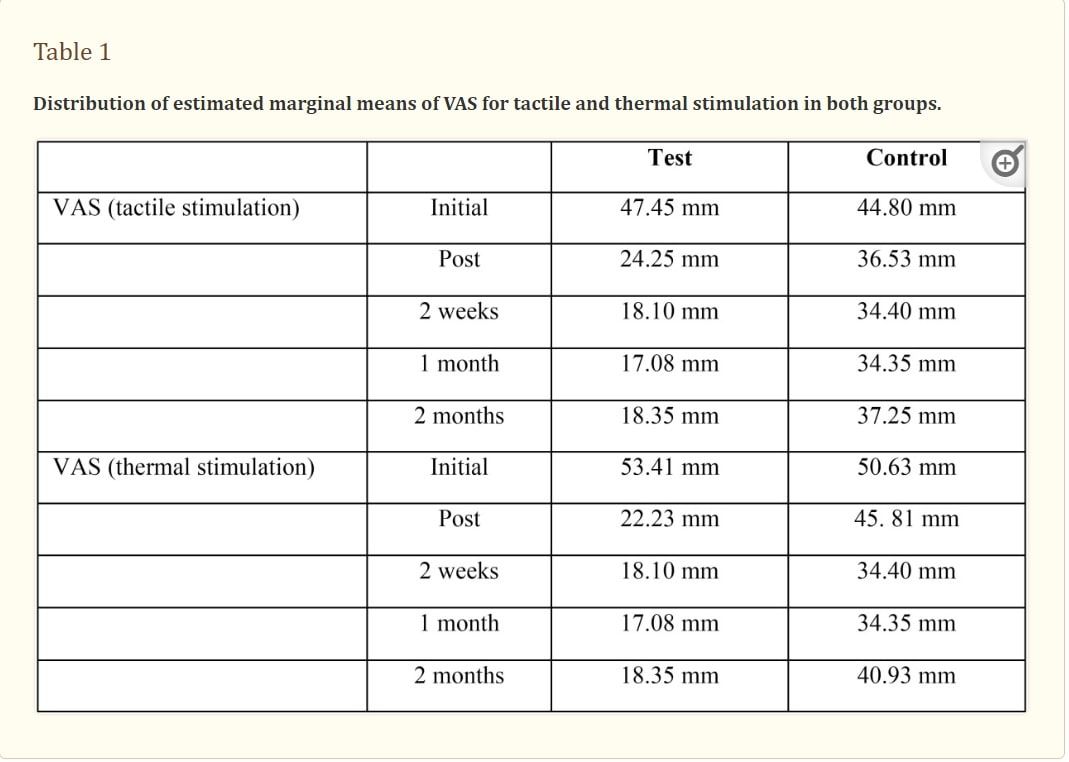
The VAS score is a subjective measurement of pain that ranges from no pain to the worst imaginable pain.
Surprisingly, the VAS score of both the mechanical stimulation and thermal stimulation not only went down after the treatment but continued moving lower two weeks from the treatment. Then, the VAS numbers stabilized between two weeks and two months.
And there's more:
9) THOR Led Cluster Feasibility To Affect Oral Mucositis Symptoms After Cancer Treatment
In this study setup, the THOR LX2M base model was used with a 69 LED setup for treatment (33; 34). The LEDs consisted of 34 LEDs at 660nm and 35 at 850nm. The power density emitted was 50 mW/cm2.
Six different areas around the mouth were treated for 60 seconds each. The total dose can thus be calculated to 3 Joules/cm2 (60 * 50 mW/cm2 = 3,000 mW/cm2 = 3 J/cm2).
Treatment continued for 20 days. The oral mucositis was also evaluated every day. Thirteen participants were included in the study. 77% of participants, who were only 15 years old on average, had severe oral mucositis problems.
Under extreme conditions, such as cancer treatment, the dosing protocol for oral mucositis was well tolerated by the youngsters. So, the study's goal was not to fix oral mucositis but to test whether it was feasible to treat it using the THOR LED apparatus. No toxicity because of the treatment occurred either.
10) THOR Led Clusters Successfully Help Manage Pemphigus Vulgaris Lesions
Pemphigus Vulgaris is an autoimmune skin condition resulting in blistering (35; 36; 37). Mucosal tissues, such as in the mouth, are also affected.
Different THOR Led clusters, with 19, 69, and 109 diodes were tested in this study (38; 39). The wavelength used was 660nm. Both sides of the face were photographed for the study participants with pemphigus vulgarus.
The result? Wound scores improved significantly from the treatment group over the placebo. The researchers, therefore, recommend using red light therapy as a tool when conventional therapy doesn't work for countering Pemphigus Vulgaris.
I won't go into too much detail here as most people aren't affected by this skin condition.
11) Quicker Workout Recovery (Less Sleep Needed) With A NovoTHOR Red Light Therapy Bed
Once more, a study with the NovoTHOR red light therapy bed (40; 41). Twelve women of a female soccer team participated in the study. The women wore an Oura Ring at night to measure sleep quality. Before and after each red light therapy session, several physiological parameters were measured, such as sleep quality, sleep duration, heart rate, and respiratory function. Total exertion during exercise was tracked with a GPS device.
The results?
It turned out that resting heart rate decreased after exposure to the NovoTHOR red light therapy bed. Also, sleep duration was reduced after the session.
You may think that the study participants therefore had worse recovery because their sleep was cut short. But that may not be the case, as they may have needed to sleep less to recover fully. Also, the lower resting heart rate supports that latter conclusion, not the conclusion that recovery was inadequate.
The amount of light sleep and REM sleep decreased, while study participants had equal amounts of deep sleep. Total sleep duration was cut short by a whopping 40 minutes. Overall, this study outcome shows that red light therapy is a wonderful tool for sports performance once again.
And the setup of the NovoTHOR once again? The bed contains 2,000 LEDs in total, emitting 660nm and 850nm light. Power output is 25 mW/cm2 and the total dose administered over a 20-minute period is 30 Joules / cm2.
In the full text of the study, the researchers speculate about why this effect may have happened. One mechanism the researchers mention is enhanced waste clearance, although they cite Alzheimer's studies for that (42; 43). Improvements in energy production or the more efficient use thereof seem more plausible to me, although, the risk here is that the term "energy-production" is too broad as a concept.
Overall, this outcome is fascinating and I hope there are more followup studies about the same topic!
12) Wound Healing In Chronic Diabetic Foot Ulcers
Next up, there's a study about using the THOR LED clusters for countering foot ulcers, a common side effect of diabetes (44; 45). In total, 68 participants were included. The study setup was a randomized controlled trial, and the intervention and placebo groups received 34 participants each.
Both the intervention group and placebo group received conventional therapy for foot ulcers. But the intervention group also received the THOR LED cluster treatment. You can see a treatment in the picture below:
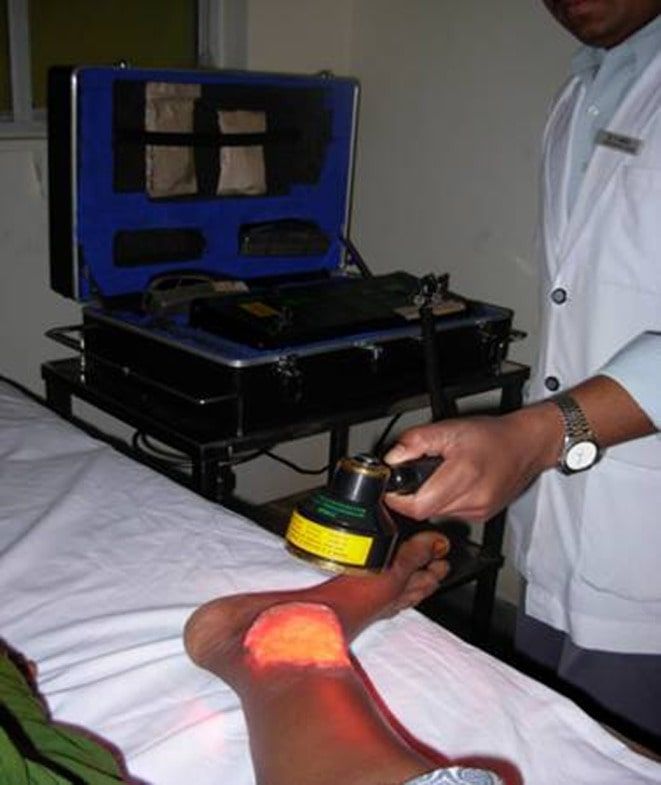
The ulcers had a maximum size of six by six centimeters at the study's start. Here's the outcome of the size difference in ulcers:
"Initial ulcer area was 2608.03 mm2 in study group and 2747.17 mm2 in control group (p = 0.361). Final ulcer area was 1564.79 mm2 in study group and 2424.75 mm2 in control group (p = 0.361). Percentage ulcer area reduction was 40.24 ± 6.30 mm2 in study group and 11.87 ± 4.28 mm2 in control group (p < 0.001, Z = 7.08)."
As you can see, the difference in ulcer size reduction is massive in the intervention group versus the control group. The ulcers in the intervention group reduced in size four times as quickly as in the control group. Once more, a big win for red light therapy!
And, that's it...
I've covered all available THOR studies in red light therapy. Next up, let's consider who should buy a product:
Should You Buy A THOR Laser Product Or NovoTHOR Red Light Therapy Bed?
Well, the average person has no reason to buy THOR Laser products or a NovoTHOR, in my opinion. Although, I've heard James Caroll talk about how they do have some residential clients who have their beds in their homes. But, for the average person, even in the developed world, these premium products are far too pricey.
As a clinic, you can probably justify the price and have a great model to make money from the THOR products. That is, if you don't just consider that you're getting a product but also the support of one of the world's experts in photobiomodulation or red light therapy.
I'm joining a seminar by James Caroll in a few days. And, in the past, when Alex Fergus and I interviewed James Caroll (Alex mostly, I was in the room), we learned a great deal from James. Reality is often more complex than we can imagine. And James has reshaped our thoughts about some topics, such as red light therapy dosing, the underlying physiological mechanisms, and other topics.
Nevertheless, most people will do far better to just stick to the basics. I therefore recommend watching a few videos of Alex, such as his recommended best tabletop red light therapy panel (or a budget version) and the best red light therapy panel (bigger sizes).
But remember that Thor doesn't aim for the consumer market - they aim to change the medical system. Of course, as a hospital, you'll want to use the highest quality product on the market.
Lastly there's one more thing:
Want To Know More About Thor Photomedicine And NovoTHOR?
In that case, there's an interview I can highly recommend the interview Alex Fergus did with James Carroll, the founder and CEO of Thor Photomedicine:
That interview is beyond epic!
Also, I just followed James Carroll's wonderful course. I wrote a blog on 16 amazing lessons I learned from the Thor Photomedicine course. Check that out if you like the topic I'm talking about!
Conclusion: We'll Follow THOR's Bright Future
Unquestionably, the future will see more publications with the THOR products. And, so far, some of these studies have been incredibly promising. Ranging from better wound healing, quicker athletic recovery, boosts in performance, and dental benefits, that list will undoubtedly be expaned in the future.
I'll cover these developments as they happen. So, I'll update this article once new studies on THOR's product range come out. I hope you enjoyed my display of all published science on THOR's amazing product range science!
Items Mentioned:
- THOR Lasers (mention Alex Fergus)
- NovoTHOR Red Light Therapy Bed (mention Alex Fergus)
